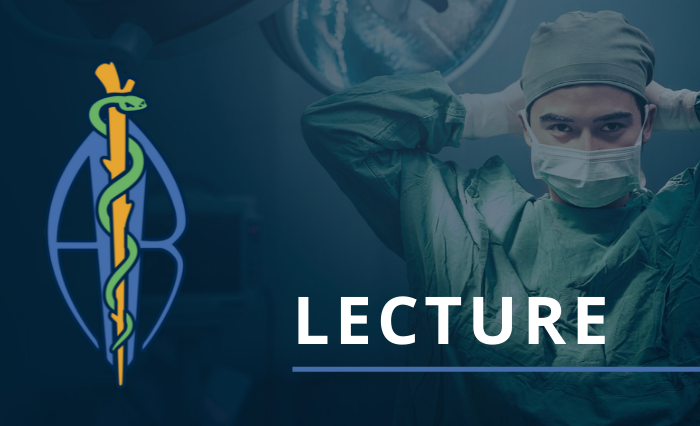Tips and Tricks on Surgeon and Animal Preparation-Aseptic Technique

Date: Thursday, October 12, 2023
Time: 10:00 am CTDuration: 30 MinutesRoom: Cumberland Ballroom, Salon ABCD
Speaker: Darcy Gagne
Darcy Gagne, BD
Most of us know the reasons for and how to prepare our surgeon and our patients for aseptic surgery without “issues”. Occasionally the various steps can become so routine that we may become lackadaisical with some of the techniques; subsequently, problems may arise without notice. Surgeon and animal preparation should be undertaken with the utmost care and attention to detail; refreshing these concepts is important.
Materials & Methods:
Too often we get in the groove of how we do things without considering the importance of surgeon and patient pre-op preparation, as well as intra- and post-operative care. This refresher on how the proper techniques we should all be exercising can only help by reviewing our processes with the greatest possible care in mind for quality scientific results. Proper surgeon preparation including how to thoroughly scrub, gown, and glove (open and closed-glove techniques) will be covered. Also, correct preparation of the patient site from shaving to final paint is equally important for success.
Results:
Every step of aseptic preparation for the surgeon and the animal’s site(s) alike are of the utmost importance. If one step is broken, the results of our scientific research can be greatly impacted. It is human nature to get in the groove of what steps to perform, and thus cut corners to save time or state that there were no issues. However, we are then forced to respond and address the issues when they arise and go back to what we originally did, realizing that it was important. Proper skin closure, cleaning of the site and protection of the incision site(s) are also great post-operative procedures to engage in. We all have the same goals in mind to use our research animals to gain scientific knowledge for drugs and/ or devices that the animals will receive. It is all our responsibility to follow the proper techniques and to treat our research animals as if they are our own.
Discussion:
The goal is to discuss the mastery of surgeon and animal preparation. It is a review of what should be done by all. It may take more time up front, but more eminent is to save time and money later – and most significantly to save animal’s lives and ensure the best scientific results that can be produced each and every time.
Conclusion:
In summary, revisiting aseptic technique and preparation of the surgeon and patient are imperative to the success of scientific results. The surgeon or the patient’s skin and operative area should not ever be the variable in the results.
This is an archived event. Please log in with your member account to access these resources.
Speaker
Senior Staff Scientist / Preclinical Surgeon
BD
Similar Events Happening
Morning Wet Lab – Vanderbilt University
Time: 8:00 am
Basic swine laparoscopy and endovascular interventions paired with an introduction to stereotaxic, intrathecal surgery, and vascular catheterization in the rat
Afternoon Wet Lab – Vanderbilt University
Time: 12:00 pm
Intermediate swine procedures and rat microsurgery and catheterization techniques
Automated Blood Sampling in a Telemetry Cardiovascular Dog Colony
Time: 10:30 am
Speaker – Amanda Wilsey Abbvie Implementation of Automated Blood Sampling (ABS) allows for uninterrupted cardiovascular data collection with simultaneous blood collection throughout a telemetry dog preclinical study. This reduction shortens study timelines, minimizes CV data artifacts, and considerably reduces compound synthesis and the associated costs. Methods: A colony of telemetry instrumented male beagle dogs were implanted and maintained in-house for non-GLP preclinical cardiovascular safety studies. Evaluation of the ABS telemetry dog cardiovascular model; highlighting the benefits and downfalls of the last seven years since implementing Automated Blood Sampling. Results: Since 2016, telemetry dogs implanted with transmitters and vascular access ports [...]
Evaluation of an African Green Monkey Model of Transient Ischemia
Time: 11:00 am
Speaker – Kimicia Isaac, St. Kitts Biomedical Research Foundation / Virscio, Inc. The NIH estimates 800,000 Americans suffer strokes yearly, with significant mortality, long-term disability, and substantial unmet medical need. The lack of translation from small animal models to clinical efficacy has slowed therapeutic development. Nonhuman primates (NHP) share anatomy and physiology with humans important to the clinical pathophysiology of stroke and truly predictive preclinical modeling. An model of transient ischemia is described in adult male African green monkeys (Chlorocebus sabaeus) that promises to enable more robust evaluation of stroke therapeutics. Methods: 11 monkeys received a 180 min occlusion of [...]
Practical Approach to Pain Management for Nonhuman Primates: Enhancing Welfare and Research Outcomes
Time: 1:00 pm
Speaker – Jan Bernal Amgen Pain management is a critical component of responsible animal research and care, particularly in the context of nonhuman primates (NHPs) utilized in biomedical and behavioral studies. This presentation aims to provide a comprehensive overview of practical pain management strategies for NHPs, with a focus on enhancing their welfare while optimizing research outcomes. The presentation will begin by defining pain and classifications of pain. It will emphasize the pain pathways and the multimodal approaches effective at each of the pain pathways, encompassing a wide range of medication and procedural options to modulate pain. Attendees will gain [...]
The Vital Role of Capnography in Surgical Research: Enhancing Patient Care and Surgical Outcomes
Time: 1:30 pm
Speakers: Jan Bernal Amgen Amy Martunas Vertex Capnography has emerged as an indispensable tool in veterinary medicine, revolutionizing the way we monitor and manage patients during various surgical scenarios. This presentation is dedicated to shedding light on the fundamental principles, practical applications, and clinical benefits of capnography in veterinary practice. The presentation will commence by introducing the basic principles of capnography, elucidating the physiological underpinnings of carbon dioxide (CO2) measurement, and its significance in assessing both ventilatory and circulatory aspects of patient health. Attendees will gain insights into the mechanics of capnography, including the technology behind mainstream and side stream [...]




